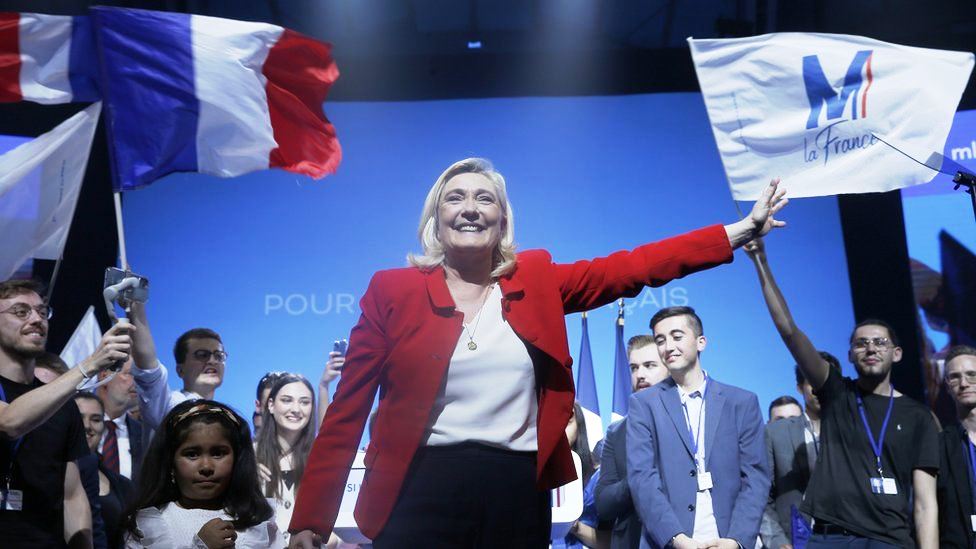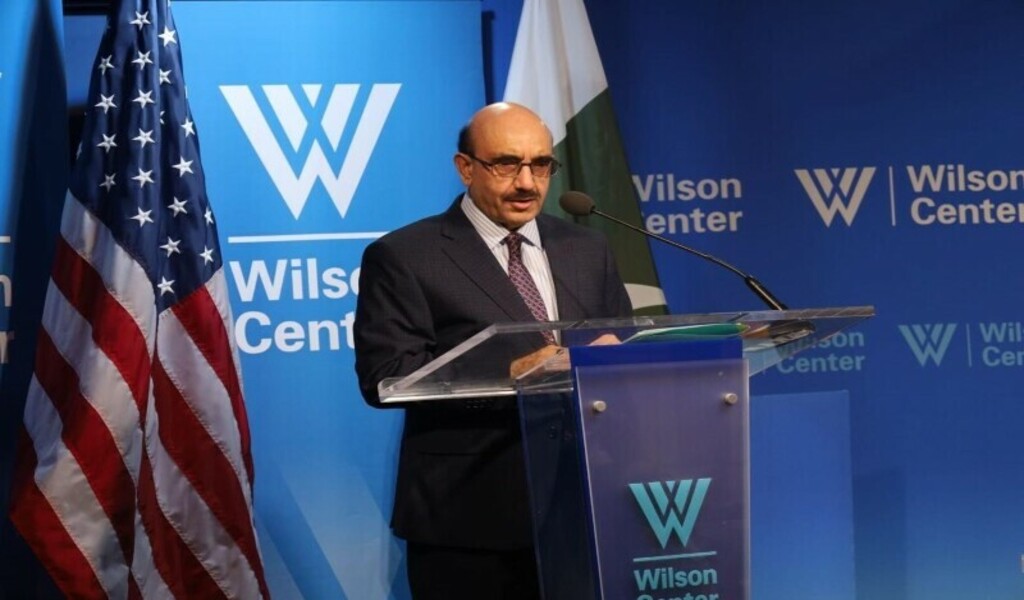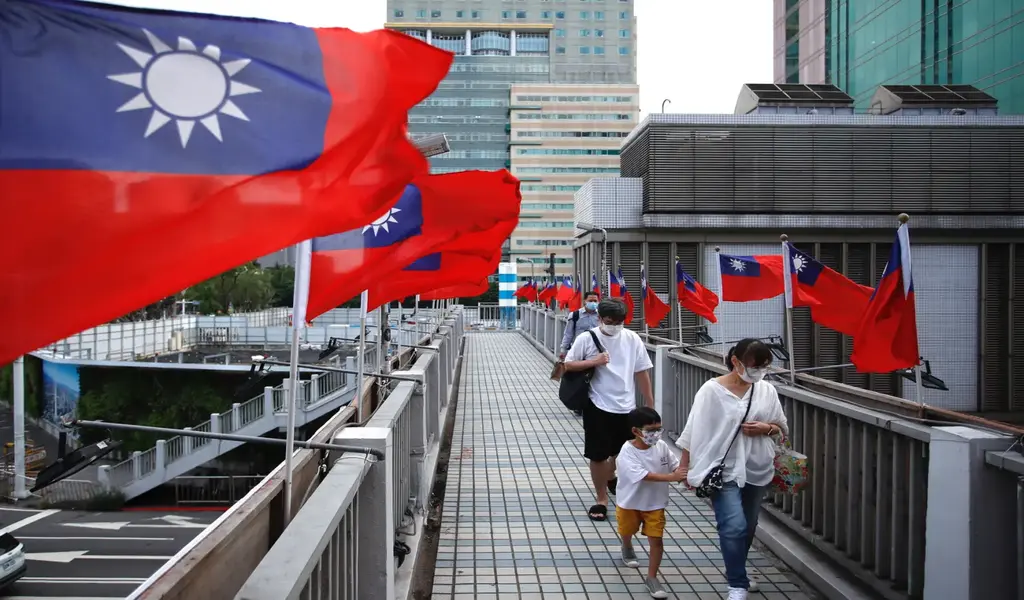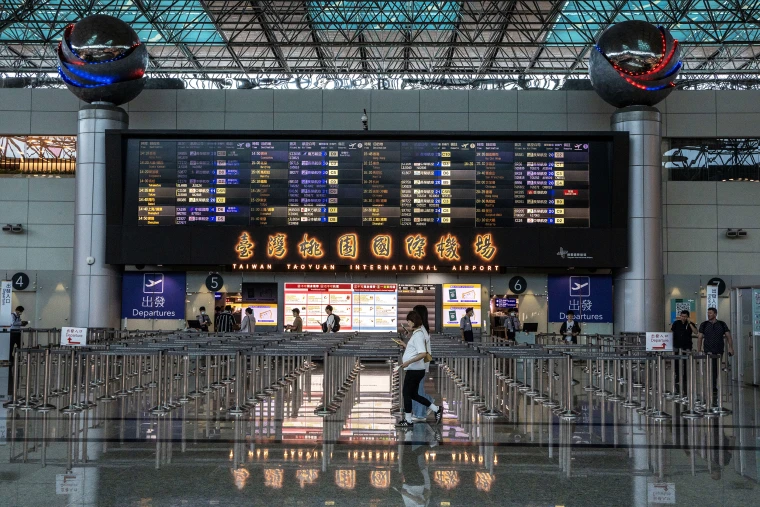World News
USS Freedom on its Way to a Deployment to Singapore
ABOARD THE USS FREEDOM – The U.S. Navy’s hottest new ship and the centerpiece of its renewed focus on Asia isn’t its largest vessel, or its most technologically advanced. But it has advantages that its bigger siblings lack.
The 388-foot USS Freedom is small enough to move among the many islands and shallow waters of Southeast Asia, a trait that allows the Navy to train alongside similar-sized vessels in the region’s navies and build relationships with them.
USS Freedom is the lead ship of the Freedom class of littoral combat ships. She is the third vessel of the United States Navy to be so named for the concept of freedom.All this, the Navy believes, will help it make sure the region’s critical waterways stay open to the trillions of dollars in oil and other trade that passes through each year. It’s an objective so important the Navy is sending the Freedom to Singapore this month even as automatic federal spending cuts carve into its budget.
“We hold our commitment to them, to our area, our theater, so highly that this deployment has not been affected,” said Rear Adm. Hugh Wetherald, the U.S. Pacific Fleet deputy chief of staff for plans, policies and requirements.
“The Navy and the Pacific Fleet are still on watch,” he said.
Freedom on Monday sailed to Pearl Harbor, into the prime mooring spot the Navy often reserves for ships it wants to show off. The blue and gray camouflage painted on its sides — designed to confuse hostile small boats and make it less visible from shore — stood out amid the plain gray hulls of the other surface vessels in port.
Until now, most U.S. ships visiting Southeast Asia have been aircraft carriers, destroyers, cruisers and other large boats well equipped for jobs like firing cruise missiles or defending against fighter jets.
But they dwarf smaller ships U.S. partner navies from other countries — such as Singapore, Malaysia, Brunei and Thailand — use for missions like patrolling the seas, catching pirates and stopping human and drug trafficking.
The larger vessels are also too big to pull into shallower ports, forcing them to sometimes anchor offshore while in the region.
The Freedom is equipped with guns and a helicopter and is designed to defend against small boats and other threats. The Navy will later have the option of swapping out its surface warfare equipment with so-called modules for hunting submarines and finding and disabling mines.
When he commanded ships moving through the region, Wetherald remembered, his counterparts from other countries would tell him that they’d like to work with smaller U.S. vessels.
“Their flag officers would say, ‘Hey, I’m glad you’re here, I love your big ship, but can you send us smaller ships? Can we exercise with smaller ships because your ship is very big,'” he recalled.
The littoral combat ship weighs less than half as much as a typical U.S. destroyer and carries a crew of fewer than 100 sailors. It measures about the length of one football field — a scale that will allow the U.S. to join countries as a partner.
“It’s a whole different world,” Wetherald said.
The Navy plans to keep the Freedom in the region for eight months, though its San Diego-based crew will rotate out after four. Another crew will serve the rest of the deployment and take the ship back home to California.
Wetherald said the Freedom will spend its deployment practicing basic naval skills in bilateral exercises with partner nations. Some drills will involve practicing responses to disasters and providing humanitarian assistance.
In a few years, the Navy aims to have the ships participate in multilateral exercises.
The U.S. is building two dozen littoral combat ships in all. It eventually plans to use some of them to replace minesweepers operating out of Bahrain and Japan.
Singapore has agreed to allow the Freedom and its crew to refuel, restock on food and get other supplies while it’s deployed. In a couple of years, the Navy plans to send another so it will have two littoral combat ships in the region at a time. It ultimately hopes to have as many as four in the area.
The U.S. says it’s emphasizing Asia and the Pacific because it’s such an important part of the global economy. Though U.S. officials don’t like to advertise the point, Washington is also responding to China’s growth as a military power.
China is on the minds of countries in the region as well.
Tim Huxley, Asia executive director for the International Institute for Security Studies, said accommodating the deployments is a way for Singapore to encourage the U.S. to stay involved in Southeast Asia as a counterweight to China.
This adheres to the small city-state’s long-held strategy of ensuring its own security by keeping major powers involved in the neighborhood and balancing them off each other, Huxley said.
Huxley said the deployment comes at a time when regional security is “becoming more complex and potentially more dangerous.”
There are active territorial disputes in the South China Sea, where six governments — China, Brunei, Malaysia, the Philippines, Vietnam and Taiwan — have overlapping claims. Insurgencies are brewing in the southern Philippines and southern Thailand. And the regional power balance, especially between the U.S. and China, is “in a state of flux,” he said.
He suspects the arrival of the littoral combat ship will add stability instead of complicating the situation further.
“It sends a tangible signal that the U.S. is determined to remain deeply involved in regional security. And at a time of change, I think that’s a useful message to send,” Huxley said by telephone from in Singapore.
World News
Marine Le Pen’s National Rally Wins the First Round in France 2024 Election

Exit polls in France showed that Marine Le Pen’s right-wing National Rally (RN) party made huge gains to win the first round of election on Sunday. However, the final outcome will depend on how people trade votes in the days before next week’s run-off.
Exit polls from Ipsos, Ifop, OpinionWay, and Elabe showed that the RN got about 34% of the vote. This was a big loss for President Emmanuel Macron, who called the early election after his party lost badly in the European Parliament elections earlier this month.
The National Rally (RN) easily won more votes than its opponents on the left and center, including Macron’s Together group, whose bloc was predicted to get 20.5% to 23% of the vote. Exit polls showed that the New Popular Front (NFP), a hastily put together left-wing alliance, would get about 29% of the vote.
The results of the exit polls matched what people said in polls before the election, which made Le Pen’s fans very happy. But they didn’t say for sure if the anti-immigrant, anti-EU National Rally (RN) will be able to “cohabit” with the pro-EU Macron in a government after the runoff election next Sunday.
Voters in France Angry at Macron
Many French people have looked down on the National Rally (RN) for a long time, but now it is closer to power than it has ever been. A party known for racism and antisemitism has tried to clean up its image, and it has worked. Voters are angry at Macron, the high cost of living, and rising concerns about immigration.
Fans of Marine Le Pen waved French flags and sang the Marseillaise in the northern French district of Henin-Beaumont. The crowd cheered as Le Pen said, “The French have shown they are ready to turn the page on a power that is disrespectful and destructive.”
The National Rally’s chances of taking power next week will rest on what political deals its opponents make in the next few days. Right-wing and left-wing parties used to work together to keep the National Rally (RN) out of power, but the “republican front,” which refers to this group, is less stable than ever.
If no candidate gets 50% of the vote in the first round, the top two candidates and anyone else with 12.5% of the registered voters immediately move on to the second round. The district goes to the person who gets the most votes in the runoff.
France is likely to have a record number of three-way runoffs because so many people voted on Sunday. Experts say that these are much better for the National Rally (RN) than two-way games. Almost right away on Sunday night, the horse trade began.
Macron asked people to support candidates who are “clearly republican and democratic.” Based on what he has said recently, this would rule out candidates from the National Rally (RN) and the hard-left France Unbowed (LFI) party. Leaders on the far left and the center left both asked their third-placed candidates to drop out.
Minority government
Jean-Luc Melenchon, leader of France Unbowed, said, “Our rule is simple and clear: not a single more vote for the National Rally.” But the center-right Republicans party, which split before the vote when some of its members joined the RN, didn’t say anything.
The president of the RN party, Jordan Bardella, who is 28 years old, said he was ready to be prime minister if his party gets a majority of seats. He has said he won’t try to make a minority government, and neither Macron nor the communist NFP will work with him.
“I will be a “cohabitation” Prime Minister, respectful of the constitution and of the office of President of the Republic, but uncompromising about the policies we will implement,” he said.
A few thousand anti-RN protesters met in Paris’s Republique square on Sunday night for a rally of the leftist alliance. The mood was gloomy.
Niya Khaldi, a 33-year-old teacher, said that the RN’s good results made her feel “disgust, sadness, and fear.”
“This is not how I normally act,” she said. “I think I came to reassure myself, to not feel alone.”
Election Runoff
The result on Sunday didn’t have much of an effect on the market. In early Asia-Pacific trade, the euro gained about 0.23%. Fiona Cincotta, a senior markets expert at City Index in London, said she was glad the outcome “didn’t come as a surprise.”
“Le Pen had a slightly smaller margin than some of the polls had pointed to, which may have helped the euro a little bit higher on the open,” she noted. “Now everyone is waiting for July 7 to see if the second round supports a clear majority or not. So it does feel like we’re on the edge of something.”
Some pollsters thought the RN would win the most seats in the National Assembly, but Elabe was the only one who thought the party would win all 289 seats in the run-off. Seat projections made after the first round of voting are often very wrong, and this race is no exception.
On Sunday night, Reuters reported there were no final results for the whole country yet, but they were due in the next few hours. In France, exit polls have usually been very accurate.
Voter turnout was high compared to previous parliamentary elections. This shows how passionate people are about politics after Macron made the shocking and politically risky decision to call a vote in parliament.
Mathieu Gallard, research head at Ipsos France, said that at 1500 GMT, nearly 60% of voters had turned out, up from 39.42% two years earlier. This was the highest comparable turnout since the 1986 legislative vote. It wasn’t clear when the official number of people who voted would be changed.
World News
Pakistan Seeks US Support for Counter-Terrorism Operation Azm-e-Istehkam

(CTN News) – Pakistan’s Ambassador to the United States, Masood Khan, has urged Washington to provide Pakistan with sophisticated small arms and communication equipment to ensure the success of Operation Azm-e-Istehkam, a newly approved counter-terrorism initiative in the country.
The federal government recently approved the reinvigorated national counter-terrorism drive, which comprises three components: doctrinal, societal, and operational.
Ambassador Khan noted that work on the first two phases has already begun, with the third phase set to be implemented soon.
Addressing US policymakers, scholars, and corporate leaders at the Wilson Center in Washington, Khan emphasized the importance of strong security links, enhanced intelligence cooperation, and the resumption of sales of advanced military platforms between Pakistan and the US.
He argued that this is crucial for regional security and countering the rising tide of terrorism, which also threatens the interests of the US and its allies.
“Pakistan has launched Azm-i-Istehkam […] to oppose and dismantle terrorist networks. For that, we need sophisticated small arms and communication equipment,” said Ambassador Khan.
Pakistan–United States relations
The ambassador observed that the prospects of Pakistan-United States relations were bright, stating that the two countries “share values, our security and economic interests are interwoven, and it is the aspiration of our two peoples that strengthens our ties.”
He invited US investors and businesses to explore Pakistan’s potential in terms of demographic dividend, technological advancements, and market opportunities.
Khan also suggested that the US should consider Pakistan as a partner in its diplomatic efforts in Kabul and collaborate on counterterrorism and the rights of women and girls in Afghanistan.
He stressed that the bilateral relationship should be based on ground realities and not be hindered by a few issues.
“We should not base our engagement on the incongruity of expectations.
Our ties should be anchored in ground realities, even as we aim for stronger security and economic partnerships. Secondly, one or two issues should not hold the entire relationship hostage,” said the ambassador.
World News
China Urges Taiwanese to Visit Mainland ‘Without Worry’ Despite Execution Threat

China has reassured Taiwanese citizens that they can visit the mainland “without the slightest worry”, despite Taiwan raising its travel alert to the second-highest level in response to Beijing’s new judicial guidelines targeting supporters of Taiwanese independence.
Last week, China published guidelines that could impose the death penalty for “particularly serious” cases involving “diehard” advocates of Taiwanese independence.
In response, Taiwan’s government urged the public to avoid “unnecessary travel” to mainland China and Hong Kong, and raised its travel warning to the “orange” level.
However, Zhu Fenglian, a spokeswoman for a Chinese body overseeing Taiwan affairs, stated that the new directives are “aimed solely at the very small number of supporters of ‘Taiwan independence’, who are engaged in malicious acts and utterances”.
She emphasized that “the vast majority of Taiwan compatriots involved in cross-strait exchanges and cooperation do not need to have the slightest worry when they come to or leave mainland China”.
“They can arrive in high spirits and leave fully satisfied with their stay,” Zhu added.

What’s Behind The China-Taiwan Tensions?
The tensions stem from the longstanding dispute over Taiwan’s status. Mainland China claims Taiwan as part of its territory and has refused to rule out using force to bring the democratic island under its control, while Taiwan sees itself as a sovereign state.
Beijing has not conducted top-level communications with Taipei since 2016, when the Democratic Progressive Party’s Tsai Ing-wen became Taiwan’s leader. China has since branded her successor, President Lai Ching-te, a “dangerous separatist”.
“The DPP authorities have fabricated excuses to deceive the people on the island and incite confrontation and opposition,” Zhu said in her statement.
Despite the political tensions, many Taiwanese continue to travel to mainland China for work, study, or business.
-

 News3 years ago
News3 years agoLet’s Know About Ultra High Net Worth Individual
-
Entertainment1 year ago
Mabelle Prior: The Voice of Hope, Resilience, and Diversity Inspiring Generations
-

 Health3 years ago
Health3 years agoHow Much Ivermectin Should You Take?
-

 Tech2 years ago
Tech2 years agoTop Forex Brokers of 2023: Reviews and Analysis for Successful Trading
-

 Lifestyles2 years ago
Lifestyles2 years agoAries Soulmate Signs
-

 Health2 years ago
Health2 years agoCan I Buy Ivermectin Without A Prescription in the USA?
-

 Movies2 years ago
Movies2 years agoWhat Should I Do If Disney Plus Keeps Logging Me Out of TV?
-

 Learning2 years ago
Learning2 years agoVirtual Numbers: What Are They For?
